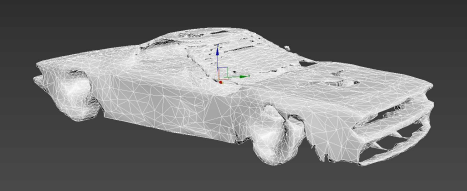Artificial Intelligence (AI) has made remarkable strides in various domains, including 3D modeling. However, a fundamental limitation of AI-driven 3D modeling is the reliance on internet data sources. This article explores why AI, despite its advancements, often falls short in creating truly realistic 3D models.
Lack of Contextual Understanding
AI relies on data, and while it can process vast amounts of information from the internet, it often lacks the ability to understand the context or intent behind the data. 3D models are not created in isolation; they are often designed with specific purposes in mind. AI, when drawing from the internet, cannot always grasp these nuanced requirements, resulting in 3D models that may lack the necessary context and realism.
Data Quality and Consistency
The quality and consistency of data on the internet can be highly variable. AI algorithms extract information from a wide range of sources, some of which may contain errors, inaccuracies, or outdated content. In 3D modeling, these inaccuracies can lead to unrealistic results. For instance, architectural details taken from inaccurate sources could result in flawed building models.
Incomplete or Biased Information
AI models learn from the data they are trained on. If the data they draw from the internet is incomplete or biased, it can lead to models that lack completeness or diversity. For example, if an AI model is trained primarily on images of well-kept urban areas, it might struggle to generate realistic models of rural, less-developed environments.
Loss of Creative Expression
AI is fundamentally a tool designed to optimize and automate processes based on existing patterns in data. While it can replicate what it has learned from the internet, it often lacks the ability to introduce creative elements or imaginative touches that human designers can provide. Consequently, 3D models generated by AI may lack the unique flair and creative expression that makes them truly realistic and captivating.
Data Overfitting
Overreliance on internet data can lead to overfitting issues, where AI models become overly specialized in certain aspects while neglecting the broader context. This can result in an unrealistic emphasis on specific features or details, making the 3D models less balanced and authentic.
Conclusion
While AI has made significant progress in many fields, its ability to generate truly realistic 3D models is still limited due to its dependence on internet data.
The lack of contextual understanding, data quality issues, biases, and the inability to add a touch of creativity all contribute to the challenges of AI in 3D modeling. For the most authentic and realistic 3D models, a combination of AI and human creativity, along with meticulous data curation, remains the most promising approach.
AI has its place in enhancing the 3D modeling process, but it is essential to recognize its limitations and use it as a tool in conjunction with human expertise.
Below are some tests using multiple apps that claim to generate realistic 3D models through Text to 3D technology.
I utilized the prompt 'Ferrari Daytona, highest quality, ultra-detailed.' And it's evident that this model is not usable at all. Crafting a lifelike 3D model of a Ferrari Daytona is unquestionably a real task.
Nonetheless, the images below show the best results I could produce using these so-called 'wonder apps.'



Top
